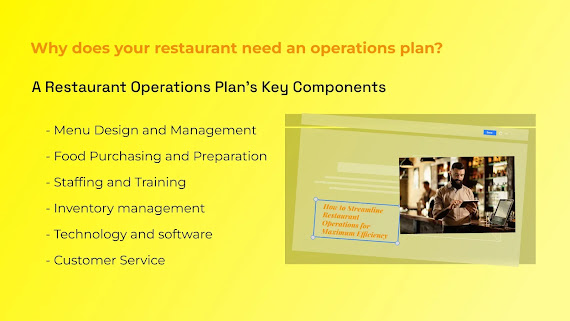What Are Operating Expenses And Its Calculation
If you're embarking on a restaurant business, understanding your costs is crucial for sustainability. Restaurant operating expenses, comprising fixed, variable, and semi-variable costs, play a pivotal role in maintaining your financial health.
Exploring Restaurant Operating Costs
Operating expenses in the restaurant industry fall into three key categories:
1. Fixed Costs: These encompass insurance, loan repayments, space rent (if applicable), and specific annual license fees. These expenses are stable and easily integrated into your budget.
2. Variable Costs: These include unpredictable expenses such as food, hourly wages, and utilities. Accurately gauging these costs may require several months of operating your restaurant.
3. Semi-variable Costs: Combining both variable and fixed elements, labor costs are the primary component. Labor expenses can fluctuate due to factors like seasonality and demand, comprising salaried employees (fixed costs) and hourly-wage staff (variable costs).
The precise makeup of restaurant operating expenses depends on your restaurant type, location, and profitability goals.
Delving into Key Restaurant Operating Expenses
The most significant restaurant operating costs center around labor, food, and rent. Let's examine each category in detail:
Fixed Restaurant Operating Expenses:
Insurance
A vital investment to safeguard your restaurant against various risks. This includes Business Liability Insurance, Product Liability Insurance, Liquor Liability Insurance, and Workers' Compensation Policies. Costs depend on your restaurant's size and type, averaging around $4,300.
Rent and Loan Payment
Rent varies with location and establishment size. Loan payments and building fees constitute long-term fixed expenses. Even if you own the property, you might still pay building administration fees, typically ranging from 8% to 12% of your total rent. Seek professional advice when dealing with leases.
Tips for Saving on Rent:
- Build a positive relationship with your landlord.
- Include provisions in your contract to protect against unfair rent hikes.
- Engage a third-party consultant if disputes with the landlord arise regarding contract terms.
- License Fees: Initial license costs are common, but renewal fees contribute to ongoing expenses.
Variable Restaurant Operating Expenses:
Cost of Goods Sold (COGS)
A crucial metric for assessing your restaurant's profitability. COGS varies depending on your restaurant's cuisine and market-driven fluctuations. Maintain gross profits around 70% and consider net monthly costs when pricing menu items.
Repairs, Maintenance, and Utility Costs
Neglecting these costs can lead to financial challenges. Allocate resources in your budget for unexpected repairs and exterior infrastructure damage. Approximately 1.5% of your restaurant's budget may cover these expenses. Utility costs may range from $3.50 to $4 per square foot based on location.
Restaurant Management Software and POS Systems
Investing in effective software and point-of-sale systems can yield long-term savings. Cloud-based POS systems, which require minimal hardware, can cost as little as $24 per month. This automation improves efficiency and reduces wastage.
Mixed Restaurant Operating Expenses:
This category involves both fixed and variable components, with labor costs being the primary consideration. Labor expenses can account for 20% to 30% of your restaurant's total costs.
Labor Cost Calculation:
Determine the total labor expenses, including salaried and hourly-wage staff, bonuses, overtime, taxes, and benefits (e.g., health care or vacation days).
Calculate the labor cost percentage using the formula: Labor Cost Percentage = (Total Labor Cost / Total Sales) * 100.
Tips to Reduce Labor Costs:
Minimize the costs associated with staff turnover, investing in finding and training new employees.
Carefully select employees and provide incentives for high performance.
Invest in automation to reduce resource wastage, using efficient restaurant management systems.
Marketing Expenses: These expenses can vary depending on your marketing strategy. Maintaining a consistent marketing plan can help control costs, although expenses might surge during seasonal promotions. Allocate 3% to 6% of your budget to cover direct and hidden marketing costs.
Controlling restaurant operating expenses is challenging but essential for effective management. Regularly monitor prime costs, labor costs, and food costs to understand your spending patterns and prevent significant losses.
For further guidance on managing your restaurant's digital presence and website development, feel free to reach out.




Comments
Post a Comment